|
The Sun type III radio emission burst was observed with three instruments.
- Tektronix MDO4104-6 spectrum analyzer being controlled by HP laptop with Python script to log screen captures.
- Icom
IC-R75 radio receiver with Radio-SkyPipe strip chart recorder.
- RFSpace
SDR-IQ Receiver with SpectraVue software.

Tektronix MDO4104-6 spectrum analyzer
- The below Tektronix MDO4104-6 spectrum analyzer display shows the Sun radio emissions from 17.5 MHz to 24.0 MHz.
- The Sun radio emission is the thin white blueish horizontal line just above the bottom of the blue spectrogram window.
- The first set of strong vertical signals from the left edge are the 17.5 MHz to 17.9 MHz broadcasting stations.
- The two horizontal lines in the middle of the spectrogram are strong lighting or strong RFI bursts.
- The short horizontal lines in the spectrogram are weak lighting or weak RFI bursts.
- The antenna sensitivity peaks on the left side of the spectrogram.
- This results in the background noise being a lighter blue color and it is the vertical broad white-blue band on the left side of the spectrogram.
Tektronix MDO4104-6 Spectrum Analyzer Video
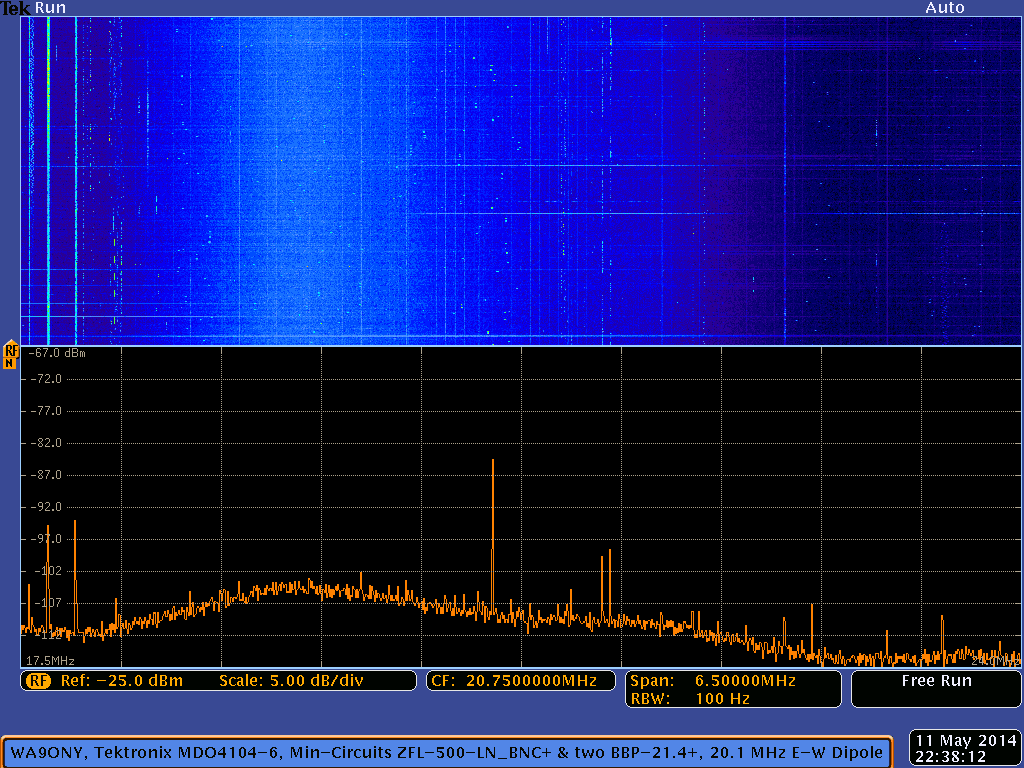

United States Frequency Allocations
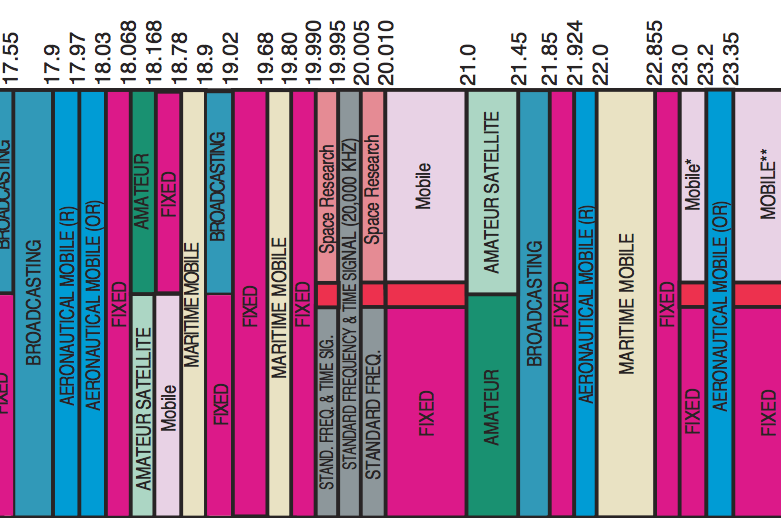

Strongest Solar Radio Burst Captured with the Spectrum Analyzer
- The spectrogram does not show the burst very clearly because it is on the bottom next to the window divider to the bottom spectrum trace window.
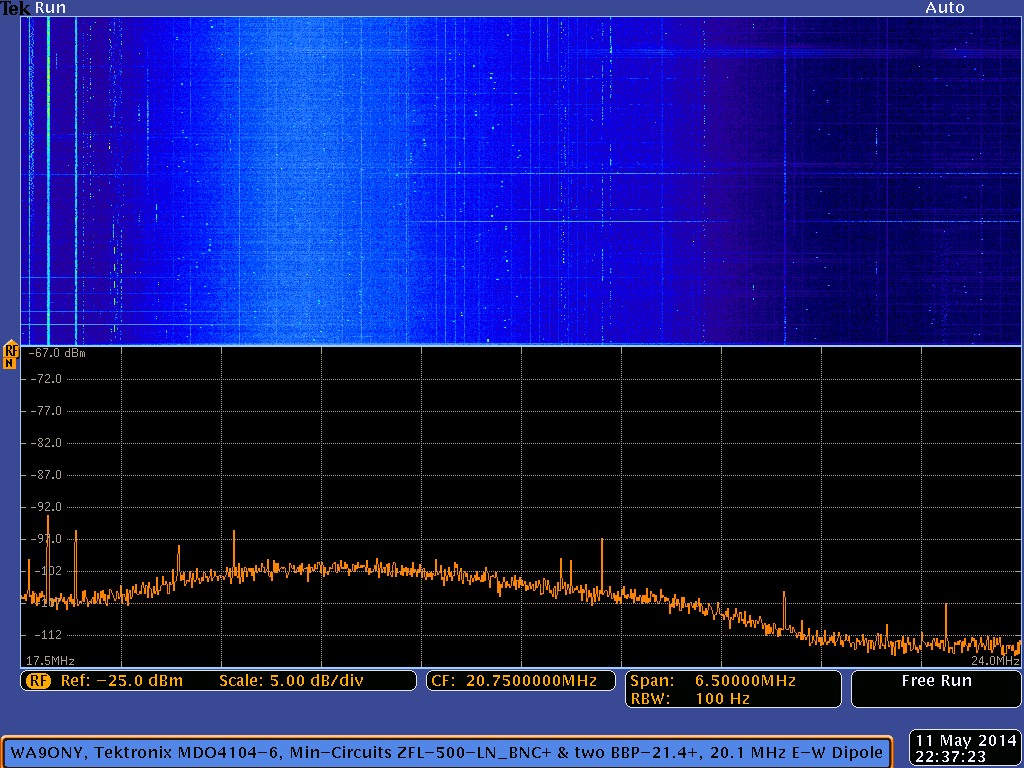
Spectrum Analyzer Summary
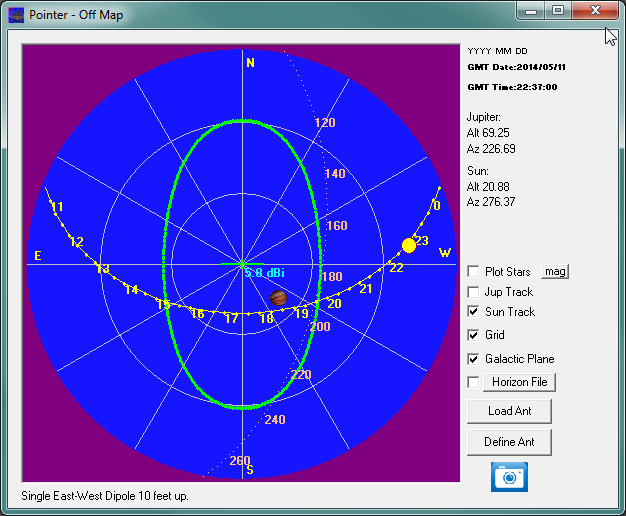
The above spectrum trace shows approximately a ~3 to ~5 dB rise in nose level for the strongest Sun radio emission signal acquired at 22:37:23 UT. The Sun was only 20.88 degrees above the horizon when the solar radio emission occurred.
Tektronix MDO4104-6 spectrum analyzer.
- 17.5 MHz start frequency
- 20.75 MHz center frequency
- 24.0 MHz stop frequency
- 6.5 MHz frequency span
- 6.5 MHz capture bandwidth
- 100 Hz resolution bandwidth
- 650 kHz per horizontal division
- 5 dBm per vertical division
- ~7 seconds spectrum update rate
- Spectrogram bottom is the current spectrum trace shown at the bottom of the display.
- Spectrogram top is the oldest spectrum, approximately 30 minutes after the current spectrum trace at the bottom.
- Date and time in lower right corner is in UT.
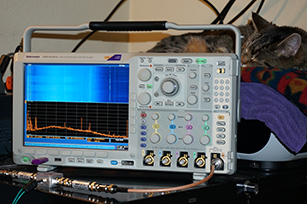
|
|
Spectrum Analyzer Equipment

Icom IC-R75 Radio Receiver Strip Chart
- Icom IC-R75 radio receiver with Radio-SkyPipe II strip chart recorder
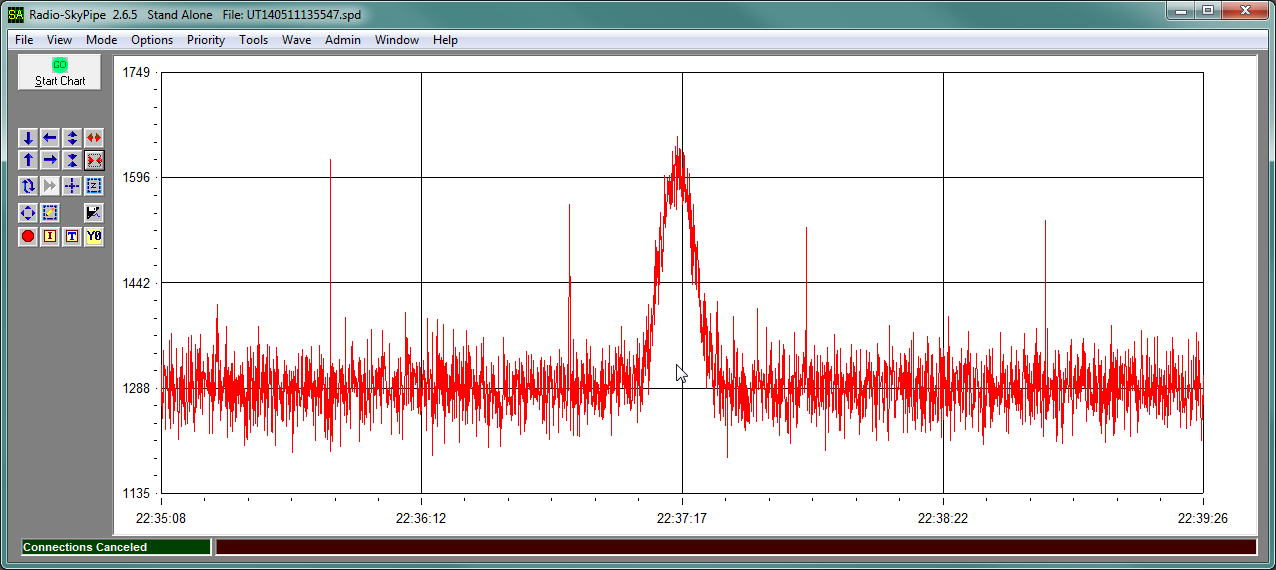
Radio Equipment
- Icom
IC-R75
- 20.1MHz
- LSB
- AGC off
- Preamp 2 on
- Behringer
XENYX 302USB 5-Input Mixer with XENYX Mic Preamp and USB/Audio Interface
- The HP laptop does not have a line input, only mic input.
- XENYX 302USB works great taking the IC-R75 back recorder jack [REC] signal and digitizing it.
- The XENYX 302USB has its own Line gain control.
- The XENYX 302USB has its own headphone gain control.
- MFJ Enterprises
MFJ-1040C Preselector
- Radiowavz
15-DP11 15M dipole antenna with 1:1 Balum
Software

RFSpace
SDR-IQ Receiver
- In the center of the spectrogram the solar radio emission peaked at ~22:37:16 UT.
- Compare below spectroagram with the Icom IC-R75 strip chart.
- SpectraVue V3.28 software.
- Radiowavz
15-DP11 15M dipole antenna with 1:1 Balum
- HP Pavilion dv7 Notebook PC, 64-bit, Windows 7 Home Premium SP1
- Ridiculously Simple NTP Client by Wolfgang "Wolf" DL4YHF for time keeping
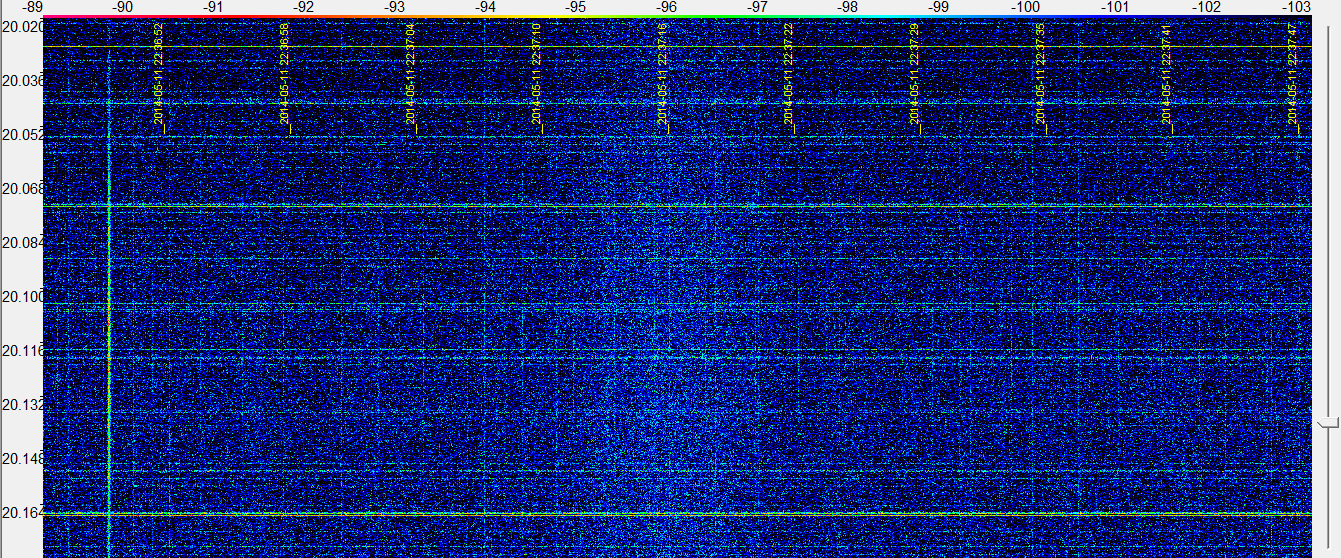

Observing Information
- OBS-Time: May 11, 2014, 2237 UT
- OBS-Location: Camas, WA USA, 16.6 miles East-North-East from the center of Portland, OR, USA

Radio JOVE Data Archive Calendar

Verifying Solar Burst
NOAA/ National Weather Service
National Centers for Environmental Prediction
Space Weather Prediction Center
Solar Event Reports (Edited Events)
- Solar burst began at 2237 UT and ended at 2237 UT
- Reporting observatory SAG: Sagamore Hill, MA, USA
- Event RSP: Sweep-frequency radio burst
- Frequency: 20 MHz to 57 MHz
- Particulars: type III burst of major intensity 2
- Type III burst: Fast drift burst.
- 2 is significant intensity rating
:Product: 20140511events.txt
:Created: 2014 May 14 0332 UT
:Date: 2014 05 11
# Prepared by the U.S. Dept. of Commerce, NOAA, Space Weather Prediction Center
# Please send comments and suggestions to SWPC.Webmaster@noaa.gov
#
# Missing data: ////
# Updated every 30 minutes.
# Edited Events for 2014 May 11
#
#Event Begin Max End Obs Q Type Loc/Frq Particulars Reg#
#-------------------------------------------------------------------------------
7760 2237 //// 2237 CUL C RSP 020-057 III/2
|

NASA STEREO / WAVES
NASA WIND-WAVES: The Radio and Plasma Wave Investigation on the WIND Spacecraft
NASA STEREO (Solar TErrestrial RElations Observatory)
NASA STEREO / WAVES data
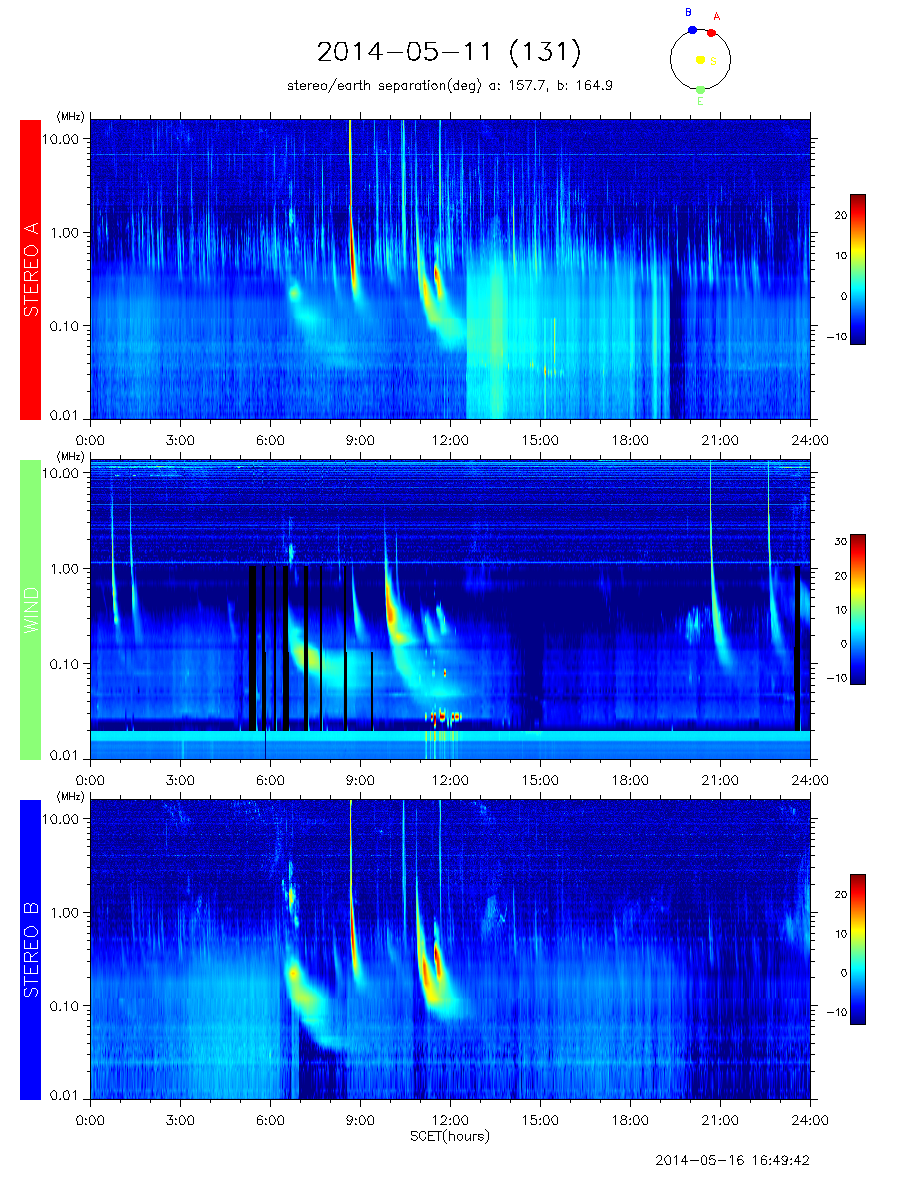


|
![]()
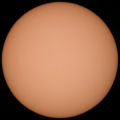
![]()





